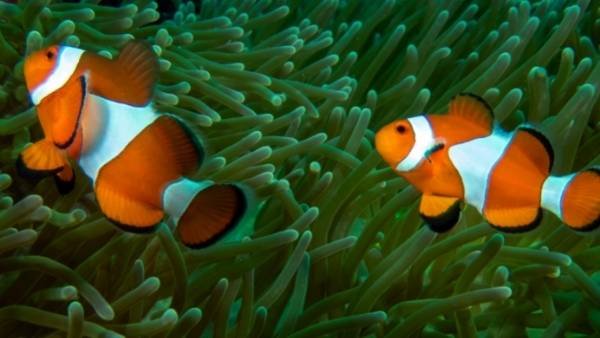
Clownfish are known for their lively personalities and distinctive orange and white stripes. However, they have specific needs and behaviors that can affect how well they coexist with other fish. Just like a family gathering where some relatives get along while others clash, the same goes for fish in an aquarium. Let’s dive into the world of clownfish and their potential tank mates.
Understanding Clownfish Behavior
Before choosing tank mates, it’s crucial to understand clownfish behavior. They are tropical fish native to the warm waters of the Pacific and Indian Oceans. Clownfish have a reputation for being semi-aggressive, especially when they’re protecting their territory or an anemone. They’re known to form strong bonds with anemones, which provide them shelter and protection from predators.
You might be wondering why this matters for tank mates. Clownfish can get territorial, especially in smaller tanks. If another fish enters their space, they might see it as a threat and react aggressively. So, when considering which fish to pair with a clownfish, think about their natural instincts and social dynamics.
Another thing to keep in mind is that clownfish do best in pairs or small groups. In the wild, they form monogamous pairs or live in small colonies where a dominant male and female share territory. If you’re planning to keep clownfish, think about how introducing other fish could disrupt their social structure.
Ideal Tank Mates for Clownfish
So, what are the best tank mates for clownfish? Here are a few species known to be compatible with these lively little fish:
- Damselfish: These colorful fish are robust and can handle the same water conditions as clownfish. However, be cautious, as they can also be territorial.
- Gobies: Smaller gobies make for excellent companions. They tend to stay at the bottom of the tank, away from the clownfish’s territory.
- Cardinalfish: These peaceful fish often inhabit the same waters and can comfortably coexist with clownfish.
- Wrasses: Many wrasse species are friendly and active in the tank, making them enjoyable companions for your clownfish.
When selecting tank mates, always consider the size of your aquarium and the number of fish you’ll have. Overcrowding can lead to stress and aggression, not just from your clownfish, but from other species as well.
Fish to Avoid with Clownfish
Now that we’ve covered some of the best tank mates for clownfish, let’s look at the types of fish you should avoid. Some fish might not mesh well with clownfish due to aggression or significantly different needs.
- Angelfish: While stunning, many angelfish can be aggressive and territorial, especially in smaller tanks.
- Triggerfish: Known for their boisterous nature, triggerfish can harass clownfish and may be too aggressive for a peaceful community tank.
- Large Predators: Fish like lionfish or groupers can pose a significant threat to clownfish due to their size and predatory instincts.
Here’s the thing: misunderstanding the compatibility of different species can lead to stress and even loss in your tank. Always do thorough research before mixing species.
Setting Up Your Aquarium for Compatibility
Creating the right environment can make all the difference. When setting up your aquarium, consider the following factors:
1. Tank Size: A larger tank allows for more space and reduces territorial disputes. Aim for at least 30 gallons if you’re planning to keep multiple fish with clownfish.
2. Aquascaping: Providing hiding spots and territories using rocks and plants can reduce aggression. Clownfish enjoy having a place to retreat to if they feel threatened.
3. Water Quality: Maintaining stable water parameters is crucial. Clownfish thrive in warm, salty water with a pH of 7.8 to 8.4. Regular testing and maintenance can prevent issues.
4. Feeding and Care: Ensure all species in the tank are receiving appropriate nutrition. Clownfish are omnivores and do well with a varied diet of flakes, pellets, and frozen foods.
Taking these steps can help ensure your clownfish live harmoniously with their tank mates, creating a lively and beautiful underwater community.
Monitoring Your Tank Dynamics
Once you have your clownfish and their potential tank mates settled in, keep an eye on their interactions. It’s important to monitor how they’re behaving, as aggression can sometimes develop over time.
Look for signs of stress, such as hiding, fin nipping, or chasing. If you notice any aggressive behavior, you might need to rearrange the tank or separate the fish. Sometimes, simply moving decorations around can change the dynamics and help reduce tensions.
You might find yourself becoming a bit of an aquarium detective, watching closely for any signs of unease. That close attention can make a big difference in keeping your fish happy and healthy.
In the end, clownfish can certainly live with other fish, but compatible tank mates are key to a peaceful aquarium. By understanding their behavior, choosing appropriate companions, and setting up a suitable environment, you can create a thriving underwater community.
Remember, every tank is unique, and what works for one might not work for another. Take the time to observe your fish and make adjustments as necessary. With a little patience and care, your clownfish and their friends can flourish together, adding color and life to your home. Dive in and enjoy the vibrant world of aquarium keeping!
